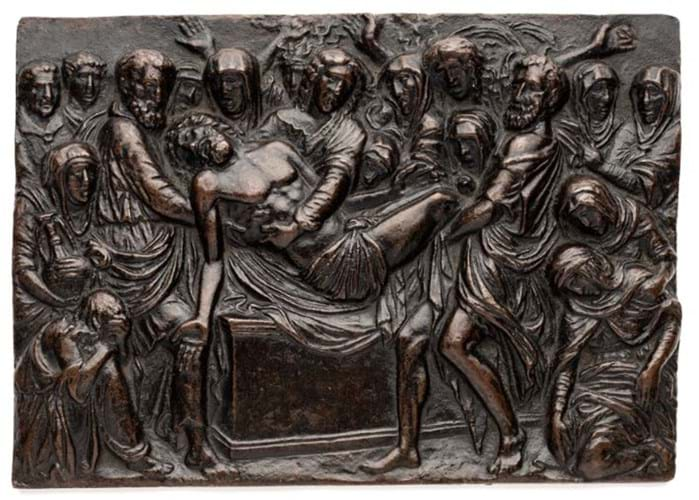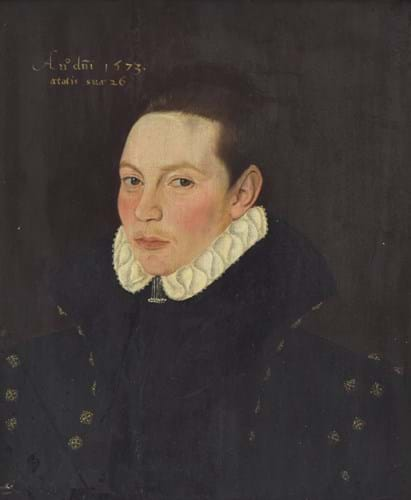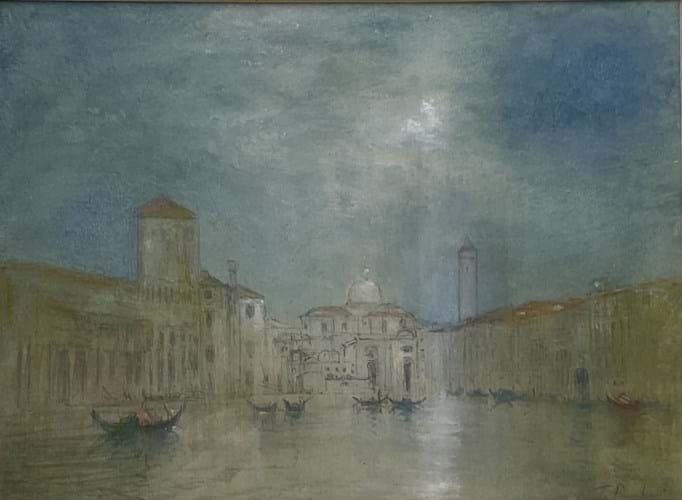1. Aynsley coffee set – £7600
The best known of the decorators who worked at Aynsley in the 20th century is the flower painter Joseph A Bailey. Employed by the Longton factory for most of his life, from 1937-74, he put his signature to many of firm's better quality ‘cabinet’ wares.
Anachronistic bouquets of English garden flowers, and particularly large pink cabbage roses, were his typical stock in trade and they can bring surprisingly high prices – typically from Far Eastern buyers. In March 2019 a 21-piece tea service for six sold for £4600 at Arthur Johnson in Nottingham, followed in November 2019 by a bid of £3200 for a similar part set at Special Auction Services.
In April this year Bushey Auctions in Hertfordshire sold a set c.1950 decorated in the Regency style with bouquets of flowers for £8600.
More spectacular evidence of the commercial appeal of Bailey’s work was provided by Keys of Aylsham on November 24. This coffee set, above, comprising six cups and saucers, coffee pot, sugar bowl and milk jug, all with floral designs of cabbage rose and other flowers (pattern number C804) sold at £7600 (estimate £300-500). The winning bidder was from Thailand.
2. Il Riccio plaquette – £14,000

‘The Entombment’ by Andrea Briosco, called Il Riccio (c.1470-1532), a bronze plaquette sold for £14,000 at Olympia Auction.
A single owner collection of more than 200 Renaissance and later bronze medallions and plaques came for sale at Olympia Auctions on November 24. A large part of this collection was assembled from 1911-36 by Alfred Spero (1886-1973), a leading dealer in works of art during the first half of the 20th century.
His sources included the Melleket collection, the Henry Oppenheimer collection sold at Christies in 1936, the collection of V&A benefactor Dr Walter Hildburgh and that of Whitcombe Greene who bequeathed some plaquettes and many medals to the British Museum. The current vendor Bernard Kelly acquired the collection in the 1960s before adding to it at the Adams collection sale (Bonham’s, London, 1996) and the Pope-Hennessy sale (Christie’s, New York, 1996).
The collection includes pieces from the workshop of Galeazzo Mondella (1467-1528) and Andrea Briosco, called Il Riccio (c.1470-1532), two of the best practitioners of the genre.
The composition of this 4.75 x 6in (12 x 15.5cm) plaquette of The Entombment is probably taken from the monumental bronze candlestick Riccio made for the Basilica of St Anthony in Padua. Two versions are known: one with an inscription on the sarcophagus thought to be the first with this the second version, differing only slightly in detail, made later in the early 16th century.
Formerly in the Spero collection, it was estimated at £5000-7000, and sold at £14,000.
3. John Ruskin watercolour of Venice – £10,000
Estimated at £1000-1500, this John Ruskin (British 1819-1900) watercolour Venice by Moonlight sold for £10,000 at David Duggleby in Scarborough on November 26. Measuring 16 x 22, the sketch of the Grand Canal has a label verso for the Charles Fairfax Murray collection.
The provenance is key. Fairfax Murray (1849-1919) was taken as a student by Ruskin at the age of 16 and in his 20s left England for Italy, where he worked as a copyist for Ruskin in Rome, Siena, Pisa and Venice, allowing him to advance his study of the Italian masters. A significant collector, in 1904 he sold his collection of more than 800 Pre-Raphaelite drawings to the Birmingham Museum and Art Gallery and gave a Titian, more than a dozen Constables, four early Gainsboroughs and a Corot to the Fitzwilliam Museum.
4. Bank of Ireland specimen banknote – £42,000
Dix Noonan Webb sold the first tranche of banknotes from the enormous collection put together by the late Gus Mac Amhlaigh of Dublin. The vast majority of the collection comprises Irish notes and will be auctioned in several parts.
The first tranche offered on November 25, included two ‘specimen’ notes from the Ploughman series that was first issued by the Currency Commission of Ireland as a transitional measure for eight Irish banks between May and June 1929. As part of the arrangement, the banks were to withdraw their previous issues from circulation and refrain from issuing their own notes in future. The notes are referred to as the Ploughman series for obvious reasons – all the denominations from £1 to £100 carry an image of a ploughman.
The two rare ‘not for circulation’ notes offered here (both stamped Specimen and carrying fictitious dates for September 5, 1978) were £20 notes created for the Bank of Ireland. Both estimated at £2600-3200 each, the example in orange sold at £3400 while the one in red was competed to a remarkable £42,000.
As Andrew Pattison, head of department at DNW, explained: “This beautiful ‘Ploughman’ specimen £20 is the first to appear at auction in many years, and attracted a huge amount of interest. Bank records show beyond doubt that all issued £20 notes were redeemed and destroyed, which means specimens like this one are the only way collectors are able to acquire one.
“Two very serious Irish collectors, both based abroad, evidently felt that this was going to be very difficult to acquire another example.”
A similar specimen £10 note issued for the Northern Bank Ltd sold for £18,600 at DNW in February.
5. 16th century portrait – £42,000

A 16th century portrait of ‘Sir Francis Willoughby Who Built Wollaton House In The Year 1580’ – £42,000 at Busby Auctions.
Estimated at £3000-5000, this 16th century portrait sold for £42,000 at Busby Auctions in Bridport on November 25. Attributed to the British painter George Gower (c.1540-96), the sitter is labelled as’ Sir Francis Willoughby Who Built Wollaton House In The Year 1580'.
The Elizabethan courtier Francis Willoughby (1546/7-96) was the second son of Sir Henry Willoughby and his wife Anne Grey. Although probably born into privilege at Woodlands in Dorset, he had a troubled childhood. Orphaned after his father died fighting in Kett's Rebellion, he spent years in Essex in the care of his uncle, George Medley, during which time his other uncle the Duke of Suffolk was executed following the failed plot to place Lady Jane Grey on the throne. However, in 1559 he unexpectedly became heir to an estate comprising the two principal manor houses of Wollaton and Middleton.
This portrait, that descended in the family for several centuries before it was acquired by Spink & Son in 1918, is long understood to be by Gower who became Serjeant Painter to Elizabeth I in 1581.








